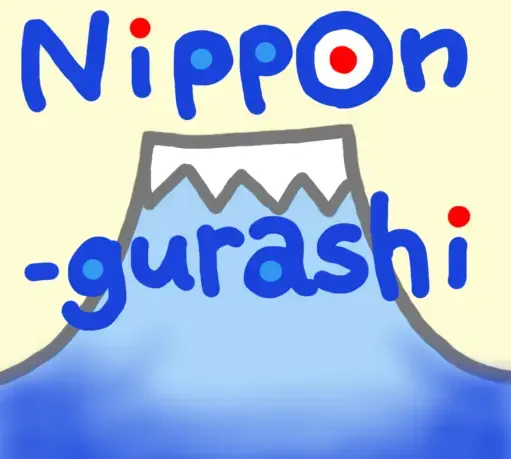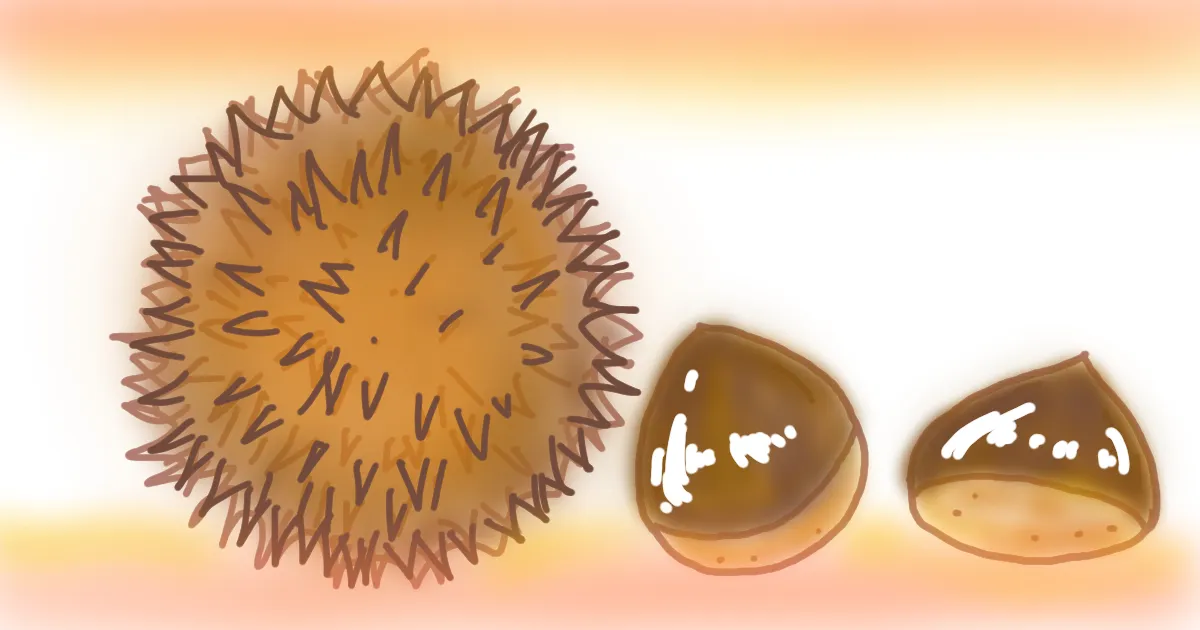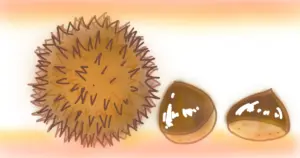I have mentioned what gairaigo is in my previous article “What is the most popular dessert sold at convenience stores in Japan? It’s shū kurīmu!”. (If you have no idea about what gairaigo is, please read that article first.) I’d like to talk about the word, マロン(maron), which is a gairaigo originally from the French word, marron. However, before explaining the word, maron, let me explain two different types of gairaigo first.
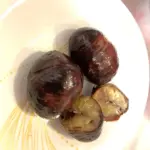
(目次= Table of contents)
There Are Two Different Types of Gairaigo
There are no official groups to separate gairaigo into, but I think there are two different groups. The first group is where the original Japanese word is no longer commonly used or there was no equivalent in the Japanese language in the first place, so that people only use the gairaigo nowadays. And the second group is where people use both the original Japanese word and the gairaigo in daily life.
The First Group of Gairaigo
Here is an example of gairaigo from the first group I mentioned:
The gairaigoエレベーター(erebētā), elevator(lift) in English, is a good example for the case where the original Japanese word is no longer commonly used so that Japanese people use the gairaigo mainly in daily life. The original Japanese word for elevator is *昇降機(shoukouki): 昇(shou) means rise or go up, 降(kou) means fall or go down, and 機(ki) means machinery. However, people in Japan don’t say shoukouki anymore, and use エレベーター(erebētā) instead. エレベーター(erebētā) is also officially used in signs and maps of floor guides in buildings.
*昇降機(shoukouki) is no longer used when people mean erebētā in general, but it is still used as 階段昇降機(kaidan-shoukouki) which means a stairlift in English.
Here is another example of gairaigo from the first group I mentioned:
The gairaigo コーヒー(kōhī) means coffee in English. Coffee beans were imported to Japan from the Netherlands during the Edo period (1603-1868). It is natural that Japanese people at that time started calling the drink the same as the language where coffee came to them from, since coffee trees had never existed in Japan. (For your information, coffee is koffie in Dutch.)
The Second Group of Gairaigo
Here is an example of gairaigo from the second group I mentioned:
The gairaigoマロン(maron) means chestnut in English. People in Japan use the original Japanese word, 栗(kuri) for chestnut in general, but also use the gairaigo マロン(maron). There is no strict rule on how to use these two words, but I think most people use 栗(kuri) for chestnuts in general and traditional Japanese dishes and desserts where chestnuts are used as ingredients. On the other hand, マロン(maron) is used mainly for desserts from Western countries such as マロングラッセ(maron gurasse) which means marron glacé in English and マロンケーキ (maron kēki) which means chestnut cake in English.
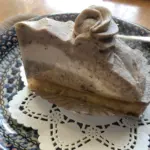

You might wonder why Japanese people don’t unify these words instead of using both the Japanese word and the gairaigo. Personally, I think unifying words that have the same meaning in order to use less words is better, but there are no rules in regard to gairaigo and people can use them in whatever way they want to. Since there are no rules, this led to many Japanese companies using new gairaigo for their advertisements. New words always sound attractive and give a fresh and fashionable impression to people.
Starbucks Japan’s Strategy? for English Translation
Starbucks Japan sells pastries made with chestnuts in Autumn every year. There is a dessert called マロンパウンドケーキ(maron paundo kēki) in Japanese, but strangely its English translation is Marron Pound Cake for some reason. The company is from the U.S, so they know the correct English translation is “chestnut pound cake”. Then, why do they use French word marron? I guess there must be a reason why they use the word, marron, but I have no clue unfortunately.
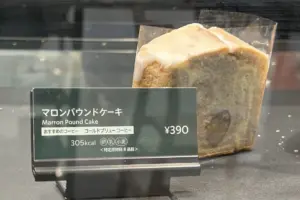
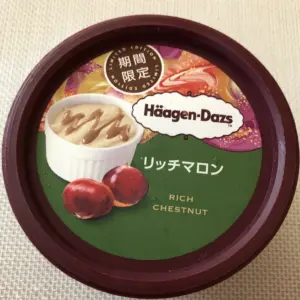
Many Japanese People Believe that Marron is an English Word
This is not Starbucks Japan’s fault, but the reason (at least I think) many Japanese people misunderstand that the word marron is an English word is because about 80% of modern gairaigo are from English. What kind of gairaigo is commonly used in Japan? Here’s a list of gairaigo that elementary school students in Japan should know in order to pass an entrance exam for a private middle school.
| アドバイス (adobaisu) | advice |
| アピール (apīru) | appeal |
| イメージ (imēgi) | image |
| インパクト (inpakuto) | impact |
| エネルギー (enerugī) | from German word, energie (energy in English) |
| エピソード (episōdo) | episode |
| カリスマ (karisuma) | charisma |
| キャリア (kyaria) | career |
| キャンセル (kyanseru) | cancel |
| コミュニケーション (komyunikēshon) | communication |
| サプライズ (sapuraizu) | surprise |
| ショック (shokku) | shock |
| ストレス (sutoresu) | stress |
| センス (sensu) | sense |
| トラブル (toraburu) | trouble |
| ニュアンス (nyuansu) | from French word, nuance (also nuance in English) |
| ネガティブ (negatibu) | negative |
| プライド (puraido) | pride |
| プライバシー (puraibashī) | privacy |
| プレッシャー (puresshā) | pressure |
| プログラム (puroguramu) | program |
| プロフェッショナル (purofuesshonaru) | professional |
| ポイント (pointo) | point |
| ポジティブ (pojitibu) | positive |
| メリット (meritto) | merit |
| メンタル (mentaru) | mental |
| モチベーション (mochibēshon) | motivation |
| ユーモア (yūmoa) | humor |
| ユニーク (yunīku) | unique |
| リアル (riaru) | real |
There are a total of 30 words in the above list, and 28 of those words are originally from English.
Maron, as a Name of Characters in Japan
Although the word マロン(maron) is mainly used for western desserts in Japan, it has been used for Japanese characters’ names, too. This is just my personal opinion, but I think many Japanese people would agree that マロン(maron) sounds cuter than 栗(kuri).
(1) マーロン(Māron) from Dragon Ball series
The spelling is Marron in the English version. She is Krillin’s daughter in the Dragon Ball series. Krillin’s original name in Japanese is クリリン(Kuririn). The creator Akira Toriyama did not reveal where the name Kuririn came from, but the name sounds related to 栗(kuri) which is chestnut in English. Apparently, Akira Toriyama mentioned in his interview that he named the character マーロン(Māron) because it means chestnut in French.
Are you interested in reading the manga of Dragon Ball series? They are available on Amazon!
Dragon Ball Complete Box Set: Vols. 1-16 with premium (Amazon Link)
Dragon Ball Z Complete Box Set: Vols. 1-26 with premium (Amazon Link)
(2) 日下部まろん (Maron Kusakabe) from Phantom Thief Jeanne
She is the protagonist of the manga(and anime) called 神風怪盗ジャンヌ(kamikaze-kaitou-jyannu), Phantom Thief Jeanne in English. In the manga’s setting, Maron Kusakabe is the reincarnation of Joan of Arc (Jeanne d’Arc) who is a patron saint of France. The author of Phantom Thief Jeanne has never stated why she named this character Maron, but it may be related to French. The name of Maron’s mother is 日下部ころん (Koron Kusakabe), and it sounds like the French word, (eau de) Cologne.
Neither Maron nor Koron are common Japanese female names. They are too unique, and are obviously for manga and anime in Japan.
(3) マロンクリーム (Marroncream) from Sanrio
According to Sanrio’s official website, Marroncream is a bunny girl who was born in a suburb of Paris, France. Her name is a hybrid of French and English. The original creator of this character said in an interview that the original name was おしゃれうさぎ(Oshare-usagi) which means fashionable bunny. They changed the name from Oshare-usagi to Marroncream before the character’s debut.
Fun fact: Translated to English, Marroncream’s mother is Vanillacream and the father is Almondcream.
(4) ハリマロン (Harimaron, the English name is Chespin) from Pokemon X and Y
ハリ(hari) sounds like 針(hari) which means needle or pin in English and マロン(maron) means chestnut. This pokemon’s design is based on a chestnut and a hedgehog. Hedgehogs are called ハリネズミ(hari-nezumi) in Japanese, which literally means needle mouse in English.
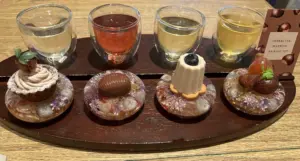
Conclusion
When I have a chance to talk with people from France, I’d like to ask them what they think about Japanese characters named “Marron” someday.
If you travel to Japan and communicate with local people in English in the future, there may be an opportunity for you to hear “maron” instead of “chestnut”. In that case, please introduce my blog and suggest to them to read the Japanese version of this article. (^U^)/
